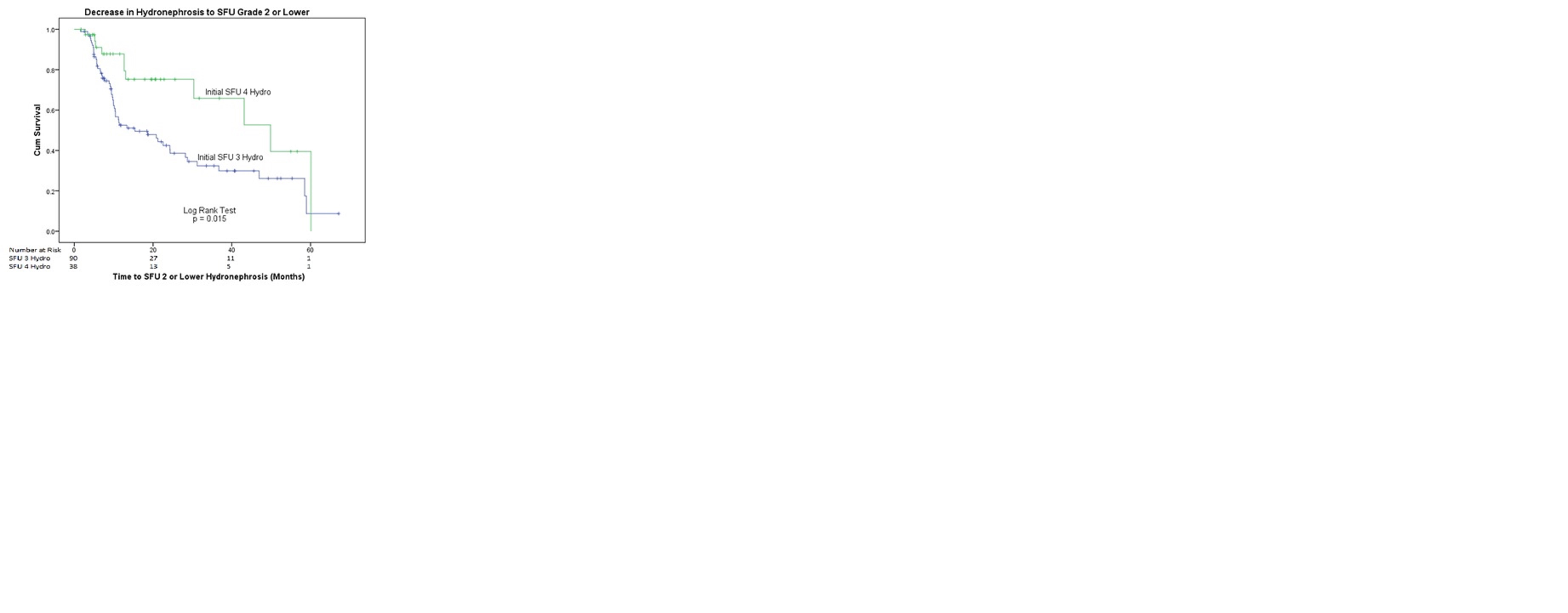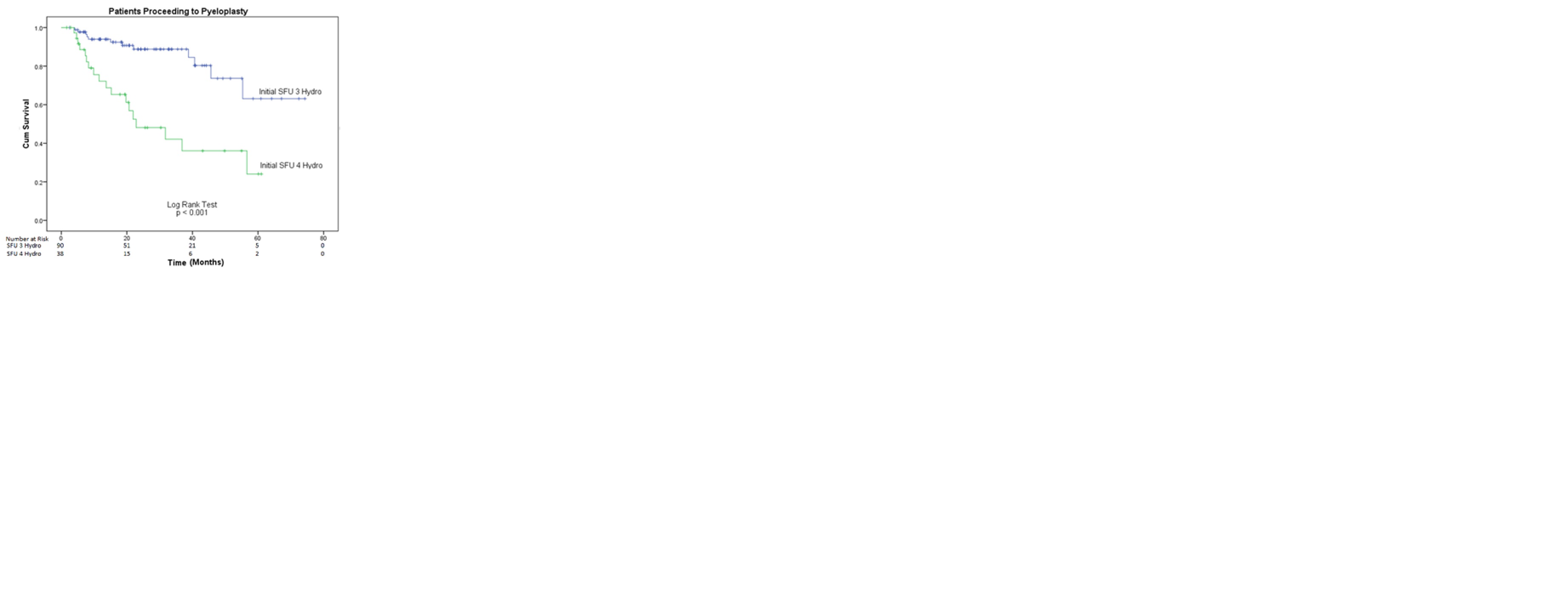Conservative approach to unilateral neonatal grade 3-4 hydronephrosis - evaluation of outcomes with long-term follow-up
Kunj R. Sheth, MD1, Adam J. Kern, MD1, Michelle Arevalo, BA1, Bruce J. Schlomer, MD2, Patricio C. Gargollo, MD3, Micah A. Jacobs, MD2.
1University of Texas Southwestern Medical Center, Dallas, TX, USA, 2Children's Health, Dallas, TX, USA, 3Mayo Clinic, Rochester, MN, USA.
INTRODUCTION: Unilateral neonatal hydronephrosis is most often secondary to ureteropelvic junction obstruction (UPJO), but surgical intervention is not always necessary as many spontaneously resolve. While observation is common for grade 1-2 hydronephrosis, at our institution we have also observed children with grade 3-4 hydronephrosis since 2009. In this study we retrospectively evaluate the outcomes of these observed patients, specifically noting how many patients ultimately required surgery and any potential harm to renal function due to observation.
METHODS: In this IRB-approved retrospective study ICD-9 codes for hydronephrosis were used to identify all newborn patients presenting with isolated unilateral UPJO from 2009-2014 with Grade 3-4 hydronephrosis. Patients with ureteral dilation, duplication, neurogenic bladder, posterior urethral valves, and/or bilateral grade 3-4 hydronephrosis were excluded. Patients who did not return for follow-up after initial evaluation were also excluded. Demographic information, occurrence of febrile UTIs, imaging studies, operative procedures and ultimate outcomes were documented.
RESULTS: Over the 6-year study period, 142 patients presented for initial evaluation of neonatal unilateral grade 3-4 hydronephrosis. Thereafter, 128 patients returned for follow-up, of which 38/128 presented with grade 4 hydronephrosis, while 90/128 patients presented with grade 3 hydronephrosis. Only 12 patients developed febrile UTIs, 3 while on prophylactic antibiotics. An additional 6 patients were placed on prophylactic antibiotics despite no UTI history. The degree of hydronephrosis improved to SFU2 or better in 64 (50%) patients by a median time of 9.67 months (range 1.61 - 15.22 months) as demonstrated on Kaplan Meier analysis (see Figure 1). For the remaining patients, hydronephrosis improved in 14, remained stable in 29, and worsened in 21 patients. 31 patients underwent pyeloplasty at a median age of 15.06 months (range 3.88-56.61 months). Primary surgical indications included asymmetric renal function in 11/31 patients, increased or persistent hydronephrosis in 16/31 patients, and recurrent UTIs in 4/31 patients. Patients with initial grade 4 hydronephrosis were significantly more likely to require pyeloplasty in comparison to patients with grade 3 hydronephrosis (47.3% versus 14.4%, p<0.001, see Figure 2). A decline in renal function over time was seen in 5 patients (3.9%), 1 with SFU grade 3 and 4 with SFU grade 4 initially. Patients who had a pyeloplasty for persistent hydronephrosis had surgery at a median age of 21.37 months (range 4.67-53.96 months). Postoperatively all patients showed improvement in hydronephrosis, although two patients with preoperative function <30% had minimal differential function after surgery.
CONCLUSIONS: SFU 3-4 hydronephrosis can be safely observed with indications for pyeloplasty being worsening hydronephrosis, decline in renal function, or infection. Kidneys with poor preoperative function are more likely to show a decreased function postoperatively. Amongst those observed, 64/97 (66%) improved to SFU2 hydronephrosis within 2 years time. 

Back to 2016 Fall Congress
